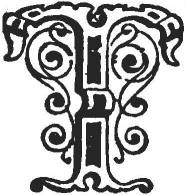
Traditions and Hearthside Stories of West Cornwall, Vol. 2, by William Bottrell, [1873], at sacred-texts.com
The Last Cardew, of Boskenna, and the Story of Nelly Wearne.
If two love each other, they'll meet by and bye;
No storm is so wild, and no night is so black,
If two wish to meet they will soon find a track.
From Klaus Groth's Song "Keen Graff is so brut."
Max Muller's Translation.
 |
From the height called the Rockery, (surely there must be an old Cornish name,) the view embraces towering tarns, distant hills, and headlands, including Castle Teryn and the Lizard Point; scenes of many wild legends and poetic traditions, of Danish invaders, of witches, saints and hermits.
The waters roll, divinely blue and clear;
With white sails flashing in the sunlight's ray,
Of countless vessels, near and far away;
Here the wild sea-gull plumes her snowy breast,
Then skims the wave or perches on the crest
Of some majestic cairn, or cromlech where
Long ages past the Druids knelt in prayer,
Till, with stretched wing, she cleaves the fields of blue,
Dips ’neath th’ Atlantic, and is lost to view."
One of the most delightful spots on the grounds of Boskenna is a little wooded glen, through which flows a clear stream, embowered by luxuriant foliage and fringed with ferns, flags, and
sedges, amongst which many rare wild flowers show their elegant bells of pale blue, and star-like blossoms of every tint. The brooklet and shady walk wind down this little vale to St. Loy Cove, where, within a few years, there stood on the verge of the cliff, the walls and altar of a chapel dedicated to St. Eloi; but, a few years ago, this interesting relict of the piety of ages past, with its wrought-stone altar, was thrown over cliff by the, then, occupier of an adjacent cottage, without the knowledge or permission of the owner of the property. The vestiges of this sacred building were thus toppled into the sea, merely that a few feet of land might be gained for growing early potatoes; and now nothing remains but the name of St. Loy to connect this romantic spot with the saint by whom Chaucer's "Wife of Bath" was accustomed to swear. We fear that the mention of this realistic, marriage-loving dame may put to flight all poetic notions; yet hear what our Cornish poetess, Mrs. S. E. Tonkin, (from whom we have quoted above) says of this hallowed shrine.
A pause to hear a babbling brooklet's tale;
A moment's lingering by its mossy well,
And I, once more, am in St. Loy's green dell.
Ages ago, as old traditions say,
The monks devout stole here to fast and pray;
Within these wilds they communed by the sea,
And reared for worship a fair chapelry,
Where pious souls, and needy, found them rest,
And by their prayers and sanctity were blest.
Naught now remains to whisper of the past;
Still, o’er the spot a holy light is cast,
In gothic arches yon fair trees entwine,
Low-drooping o’er the consecrated shrine,
And waves come singing, as they inland flow,
Thrilling the heart with strains of long ago."
The place thus favoured by nature and Mrs. Tonkin's verse, was an ancient seat of the Cardew family, who, between two and three centuries ago; also owned Boskenhal and several other farms in the neighbourhood. The last of this decayed family, who lived in the old home of his ancestors, mortgaged this place, and other lands, to the predecessors of the present possessor. The Paynters resided here for some generations, and the late Mr. John Paynter will long be remembered in the West Country as a liberal landlord and kind neighbour; and for being more learned in the law than country justices usually are. It was a common saying in the West, that "the Squire of Boskenna knew more law than all the lawyers of Penzance put
together!" This place is now the residence of Charles Dacres Bevan, Esq., Judge of the district County Court. Mr. Bevan has much improved and beautified both the mansion and grounds. Many years ago, the late Mr. Cardew, of St. Ives, (who was descended from a collateral branch of the Boskenna family) informed us that there were several old family portraits of the Cardews in the mansion of Boskenna during his remembrance. He also related the following traditional
